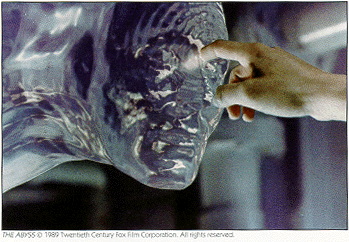What happens when you snap out of the black and white iron prison?
Not extra-terrestrial intelligence
Extra-environmental intelligence
The Internet As Seen From Space
Gardens are machines, all environments are machines
Confinement speeds up mutations
The two largest organs in the human body have an endo-skeleton
The third largest has an exo-skeleton
Only one has taken over the planet
All environments must be considered in psychic-somatic terms
All man made environments speed up processes
All electronic environments are an extension of human consciousness
Water flows into any available space
Mechanical Bride meets
Medium is the Massage
The Russians were knocked out of film by color
They couldn’t handle the distortion of photographic media
Kubrick: black and white - Paths of Glory, Lolita and Strangelove
Kubrick Color - Spartacus, 2001(?), A Clockwork Orange (?)
I'm not a director
🌈 🌈 🌈
I'm Stanley Kubrick
"I always thought music looked nice on paper"
Planets are non submersible
World religions are non submersible
😷 cough
: Finnegans Wake Monomyth :
: Bible Monotheism :
: 2001 Monolith :
Thunder Words : Finnegans Wake Sacraments : Bible
Non-Submersible Units : 2001
Sacraments of Initiation in 2001
Baptism : Holy Water
Confirmation : Monolith
Eucharist: Holy Blood
Sacraments of Healing in 2001
Penance: the pod confessional
Anointing of the Sick : retrieval of the body
Sacraments of Service in 2001
Holy Orders : The Jupiter Mission
Matrimony : The Starchild
The 200I Ching: A Space-Time Odyssey
“The I Ching is a nonverbal experience; out of two hours and nineteen minutes of Timewave Zero, there are only a little less than forty minutes of dialog. I tried to create a visual experience, one that bypasses verbalized pigeonholing and directly penetrates the subconscious with an emotional and philosophic content. To convolute McKenna, the message is the medium. I intended the timewave to be an intensely subjective experience that reaches the viewer at an inner level of consciousness, just as music does...You're free to speculate as you wish about the philosophical and allegorical meaning of it...but I don't want to spell out a verbal road map for the I Ching that every viewer will feel obligated to pursue or else fear that he's missed the point."
Broken Line: last page first page
Unbroken Line: first page last page
The Mutation of the Nightmare of History into Day Light
Broken Line: Old Testament/New Testament
Unbroken Line: The Bible
QOPH
Written with a Q
Spoken with a K
Conspiracy of print
Magick of speech
KopH?
K is 11
H is 8
2001 to 2020 - 19 years
cough 😷 😷 😷 😷 😷 😷 😷 😷 😷 😷 😷 😷 😷 😷 😷 😷 😷 😷 😷 😷 😷😷 😷 😷
“The Hermetic Corpus was a B/W version (pre-Moses) of something written in Color (post-Christ)
2001 is a colorized version (post-Christ) of something photographed in black and white (pre-Moses).”
We are shifting from the Iconic Space of Tarot
To the Acoustic Time of I Ching.
S🐻

















































